Back in January, we were younger, naive even. Recreational time was revered. A simple walk was seen as just that—simple. Dating, too, was seen with freedom and ease.
Today, we are hardened, jaded by the events that have uprooted our circumstances. Under mass shelter-in-place ordinances due to the outbreak of COVID-19, we have had to get creative in the ways we go about our daily lives. And dating is no exception.
From long phone conversations to virtual speed dating, the ways in which people are keeping their love lives—well, alive—are changing. So, too, are the ways in which dating apps, like Tinder and Match, are marketing to their subscribers.
In January 2020, we kicked off research into how dating apps communicate with their users. For three weeks, we closely monitored the marketing programs of five dating apps: Tinder, OkCupid, eharmony, Coffee Meets Bagel and Match.
This research, which is part of our ongoing User Engagement Teardown series, dives into all aspects of how these brands communicate with their audiences—everything from which channels they use, how frequently they send messages, and even the style and substance of each touchpoint.
We created profiles, liked other users, adjusted our preferences, and even abandoned carts to see how their marketing communications reacted to our behavior. You can see the full teardown and a detailed look at our experience here.
In the teardown, we have broken down the communications from these dating services to identify common trends and preferences as well as the different cross-channel marketing strategies used to differentiate brands and set their user journey apart.
Since the marketing world—like much of the rest of the world—has been flipped since we conducted the research, we thought it would be worth looking at how messaging from dating apps has changed in the last few months.
Dating Back Then…In The Wild
Back when freedom to move about the country was the norm, dating services were communicating with subscribers in ways you’d expect.
Alerts for likes and matches dominated the conversation. And much of the content sent by these brands focused on optimizing the number of likes our profile could garner.
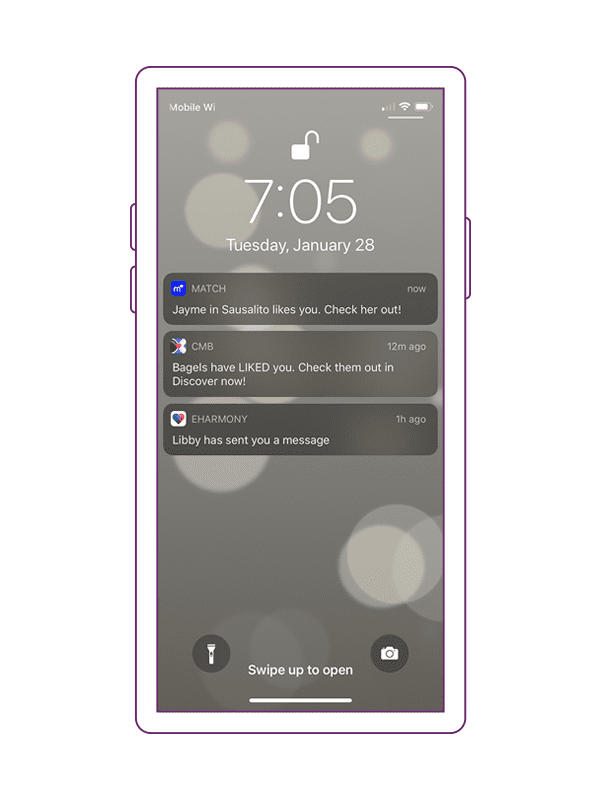

Dating apps devote much of their messaging to activity alerts.
Tips and tricks for improving our profile were commonplace and centered on our pictures. Conversation best practices also found their way into our inbox, showing the best ways to start a conversation or hold one when not getting the most engaging responses.
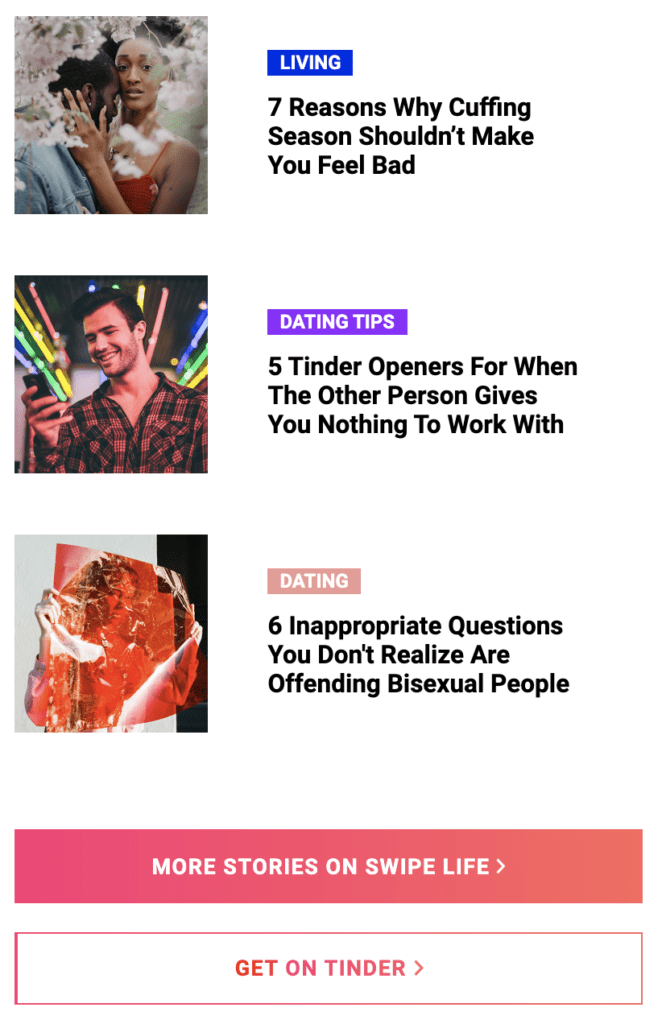

Tinder’s Swipe Life offers tips and tricks for making the most of your profile.
Some companies, such as Match, promoted in-person activities like meet-ups.
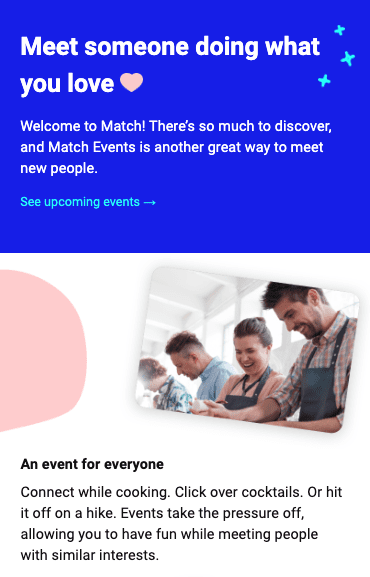

Promoting a group event takes away some of the pressure of dating.
In general and to no one’s surprise, much of the language used by dating apps back in January pushed for in-person meetings. References to “date night” and how to perfect the first date came up frequently.
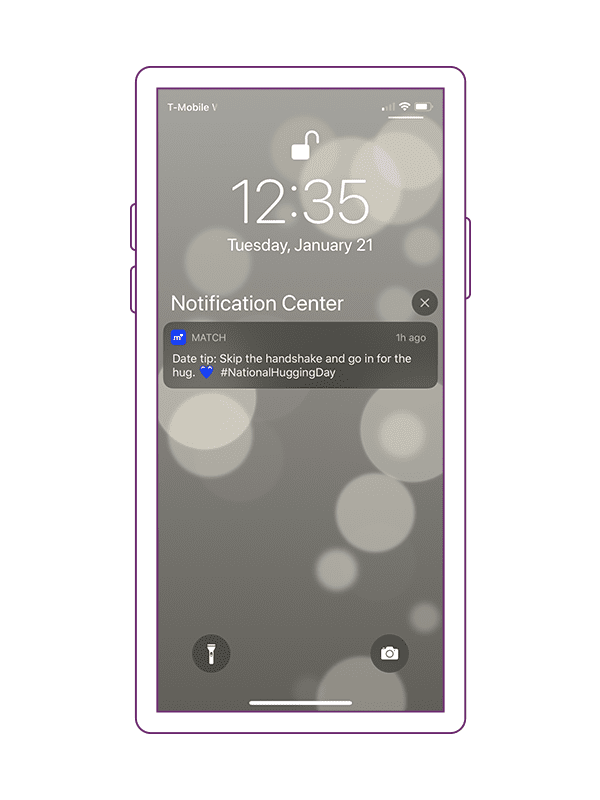

#NationalHuggingDay wouldn’t get as much attention during shelter-in-place.
Much of the marketing for dating services before COVID-19 fit into the categories you’d expect without much deviation or variation from the middle.
Dating Now…From Home
Now, things have changed. Priorities have shifted. And #NationalHuggingDay has turned into #NationalAirFiveFromSixFeetAwayDay. It’s a confusing time, to be certain, and the rules of engagement are unclear.
That’s why we’re seeing more articles such as this one from Tinder attempting to lay out the groundwork for how to continue dating from home.
In-person dating is now frowned upon and the messaging has followed suit. Match has shied away from its events series to instead explain the benefits of shelter-in-place. In its stead, they have opened a hotline for how to date while social distancing.
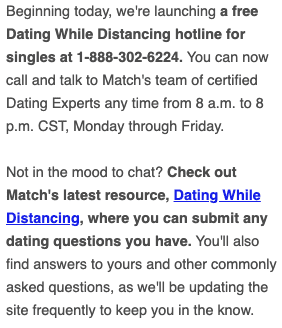

Despite social distancing, Match has made efforts to keep users connected.
Some aspects of user engagement have remained unchanged. Likes, matches and recommendations are all the more important now to give users chances to meet virtually. And these alerts are likely going to become more prevalent since dating app usage has actually increased.
Dating services are incorporating language referencing the results of the stay-at-home requirements into premium subscription promotions.


eharmony is quick to remind users that love finds a way.
And predictably, the tips and tricks have changed. For example, one from Match that surely all of us can take to heart, “Don’t skimp on style just because it’s a video chat.”
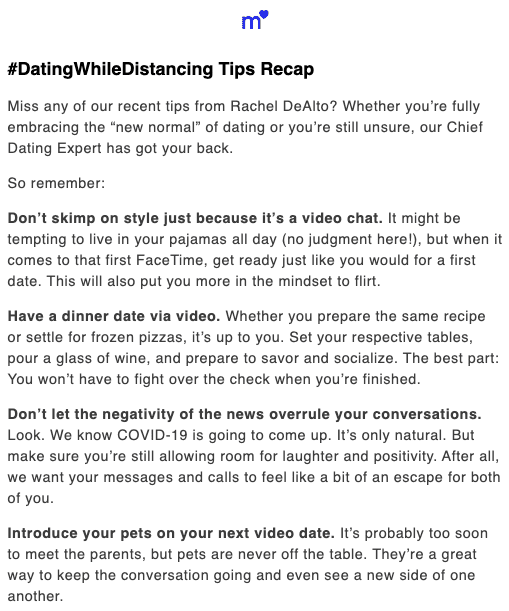

Match provides value while reminding users to stay optimistic.
The biggest difference in messaging has come from the subject line. Whereas before you would see varied themes, references and styles, now you are likely to see almost exclusively a mix of the keywords “home” and “distancing” and a reference to virtual dating.


The subject line is the easiest way to ensure readers know what’s to come.
It’s an understandably difficult task to market true love when users cannot leave their homes to meet new matches. Dating services will have to continue being direct with their users while adopting creative new strategies to help them stay connected.
Marketing a Virtual Love Connection
A purely online or app-driven dating service, such as Tinder or Match, is inherently virtual. For years they have marketed the ease with which users can meet new people, but with the underlying assumption that they, in fact, will meet in person at some point.
Nowadays, that last step isn’t so certain. But, there are ways to adapt and these brands have swiftly changed their marketing tactics to maintain and sustain. If anything, those in the dating pool now have the time to foster these relationships.
The best organizations connect with their audiences on a personal level. With a mandated physical distance between its users, dating apps first have to connect with their members. Only then can they help foster new love.
To learn more about marketing in other industries, check out our User Engagement teardowns.





























